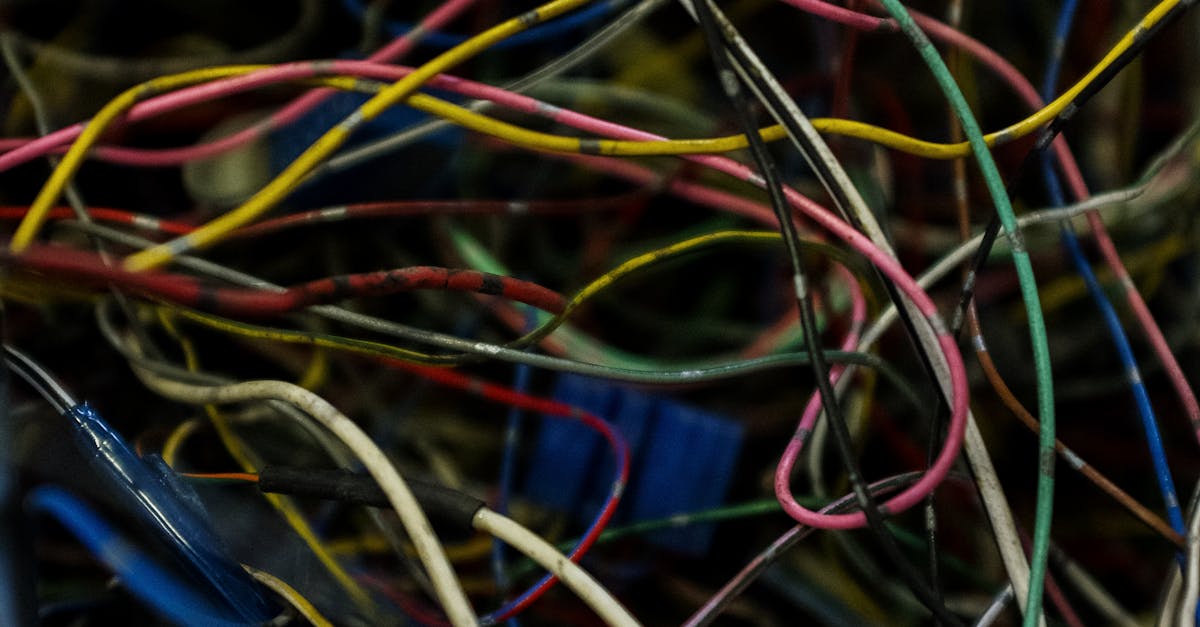
Detailed Cat6e Wiring Guide For Network Installation
- October 01, 2024
- 5 min Read
- Views 545
Detailed Cat6e Wiring Guide for Network Installation
In today's digital age, a robust and reliable network infrastructure is crucial for the seamless functioning of both home and business environments. The Cat6e cable, known for its enhanced performance and speed, is a favorite for network installations. This detailed Cat6e wiring guide for network installation will walk you through the entire process, ensuring you achieve optimal results.
Understanding Cat6e Cables
Cat6e, an augmented version of Cat6, offers improved performance and crosstalk characteristics over its predecessor. It supports data transfer rates of up to 10 Gbps at a frequency of 500 MHz and is designed to meet the stringent standards of modern networking requirements. It’s backward compatible with Cat5 and Cat5e cables, making it a versatile choice for various applications.
Materials and Tools Needed
Before embarking on any network wiring project, having the right tools and materials is paramount. Here’s a list of essentials:
- Cat6e cables
- RJ45 connectors
- Ethernet wall plates
- Punch-down tool
- Crimping tool
- Wire stripper
- Cable tester
- Cable management clips and ties
Steps to Install Cat6e Network Wiring
This section will provide a detailed, step-by-step guide to help you through the Cat6e network wiring process.
Step-by-Step Guide
Step 1: Plan Your Network Layout
Start by identifying the locations where network connections are needed. Sketch a layout of your space, marking the positioning of each device and the routing path of your cables. This helps in determining the length of cables required and the total number of RJ45 connectors and wall plates needed.
Step 2: Measure and Cut Cables
Based on your planned layout, measure the distances and cut the Cat6e cables to the required lengths. Ensure to leave some extra length to account for any changes or adjustments that may be needed during installation.
Step 3: Strip the Cable Jacket
Using a wire stripper, carefully strip approximately 1.5 inches (3.8 cm) of the cable jacket from both ends without damaging the twisted pairs inside.
Step 4: Untwist and Arrange Wires
Untwist each pair of wires and arrange them according to the T568A or T568B wiring standard. Consistency is key, so choose one standard and stick with it throughout your installation.
- T568A standard: Green/White, Green, Orange/White, Blue, Blue/White, Orange, Brown/White, Brown
- T568B standard: Orange/White, Orange, Green/White, Blue, Blue/White, Green, Brown/White, Brown
Step 5: Insert Wires into RJ45 Connectors
Insert the arranged wires into the RJ45 connectors, ensuring each wire is fully seated and in the correct order. The eight wires should be inserted into the eight slots of the connector, with the cable jacket extending slightly into the connector for proper strain relief.
Step 6: Crimp the Connectors
Using a crimping tool, crimp the RJ45 connectors to secure the wires in place. Repeat this process for both ends of the cable.
Step 7: Test the Connections
Before finalizing your installation, use a cable tester to ensure all connections are correct and functional. The tester will check for continuity, improper wiring, and potential shorts or opens.
Step 8: Install Wall Plates
If using Ethernet wall plates, follow the manufacturer's instructions to punch down the wires into the wall plate connectors. Secure the wall plate to the wall, ensuring a neat and organized finish.
Step 9: Route and Secure Cables
Route the cables according to your layout plan, using cable management clips and ties to keep them organized and secure. Avoid sharp bends and excessive tension that could damage the cables.
Step 10: Final Testing
Once all cables are in place, perform a final round of testing to ensure every connection is functioning as intended. Use the cable tester to verify continuity, data transfer rates, and overall performance.
Frequently Asked Questions (FAQ)
Q1: What is the difference between Cat6 and Cat6e cables?
Cat6e cables are an enhanced version of Cat6 cables, offering better performance and reduced crosstalk. They support higher data transfer rates and are suitable for applications requiring Gigabit and 10-Gigabit Ethernet speeds.
Q2: Can I use Cat6e cables with older Cat5 devices?
Yes, Cat6e cables are backward compatible with Cat5 and Cat5e devices. However, the overall performance will be limited to the capabilities of the older devices.
Q3: Which wiring standard should I use: T568A or T568B?
Both T568A and T568B standards are acceptable for network installations. The key is to maintain consistency throughout your installation. T568B is more commonly used in the United States, while T568A is preferred in some other regions.
Q4: How long can a Cat6e cable be for optimal performance?
The maximum recommended length for a Cat6e cable is 100 meters (328 feet). Exceeding this length may result in signal degradation and reduced performance.
Tags
Cat6e Network Installation, Ethernet Cabling, Network Wiring Guide, Cat6e Wiring, RJ45 Connectors, T568A, T568B, Cable Tester, Crimping Tool, Punch-down Tool
References
People Also View
-
1October 03, 2024
-
2October 01, 2024
-
3October 03, 2024
-
4October 09, 2024
-
5October 03, 2024
Categories
- Near Me 2147 Posts
- How To 548 Posts
- Where To 257 Posts
- Why 90 Posts
- How Much 97 Posts
- Travel 202 Posts
- Food And Drink 815 Posts
- Shopping 797 Posts
- Lifestyle 1050 Posts
- Automotive 364 Posts
- Digital Income 70 Posts








